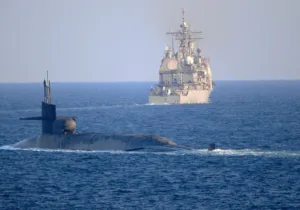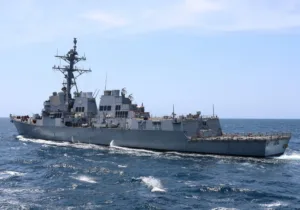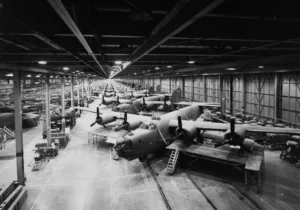The Trump administration is expected to soon release a new policy that will change the United States’ current approach to drone strikes and other targeted-killing operations in places such as Yemen, Somalia, and Libya.
Here is what you should know about military drones:
1. Drone is a commonly used term for unmanned aerial vehicles (UAVs). This type of aircraft, which carries no human pilot or passengers, may be fully or partially autonomous, though a human pilot most often controls them remotely. When deployed by the military, drones are most often used for surveillance or warfare. (Throughout this article we’ll use the colloquial term drone to refer to armed UAV systems.)
2. The technology for military drones was available throughout most of the twentieth century. Most versions used for attack, though, were similar to cruise missiles and limited in their ability to maneuver in the battlespace. It wasn’t until the 1980s when computing and electronic controlling systems made modern drones possible, notes John Sifton, and it wasn’t until the late 1990s that the Air Force began working on the technical aspects of arming unmanned aircraft with missiles.
3. The Department of Defense classifies drones in five groups based on tactical use, performance, size, airworthiness, levels of autonomy, etc. Drones are also identified by their Tri-Service aircraft designations: A for attack (i.e., air-to-surface); B for bomber (i.e., strategic air-to-surface); R for reconnaissance; M for multi-role; and Q for remotely piloted. The number in the name identifies the series of the aircraft (e.g., 1 for the first model). Thus a Predator MQ-1A/B is a first model of a multi-role drone that can perform reconnaissance, attack, or bombing.
4. The MQ-1B Predator was the primary drone used for offensive operations in Afghanistan. The current version of the Predator is 7 feet tall, 27 foot long, has a wingspan of 55 feet, and weighs 1,130 pounds empty (though it can be disassembled and carried in a cargo plane). It has a cruise speed of around 84 mph (top speed of 135 mph), a range of 700 miles, and can reach an altitude of 25,000 feet. On attack missions the Predator can be armed with two laser-guided AGM-114 Hellfire missiles. A two-person team, a pilot and a sensor operator, controls this drone. The U.S. has a total inventory of about 150 Predators, which cost $22.5 million each (2017 dollars).
5. The other common attack drone is the MQ-9 Reaper, the Air Force’s “first hunter-killer UAV.” The current version of the Reaper is 12.5 feet tall, 36 foot long, has a wingspan of 66 feet, and weighs 4,900 pounds empty. It has a cruise speed of 230 mph, a range of 1,150 miles, and can reach an altitude of 50,000 feet. On attack missions it can be armed with a combination of AGM-114 Hellfire missiles, GBU-12 Paveway II, and GBU-38 Joint Direct Attack Munitions. A two-person team, a pilot and a sensor operator, controls this drone. The U.S. has a total inventory of about 93 Reapers, which cost $77.3 million each (2017 dollars).
6. Although drones require only a small team to pilot them, it takes almost two platoons worth of personnel to keep them aloft: about 168 people for a Predator and 180 people for a Reaper.
7. The first acknowledged targeted killing by armed drones by the U.S. occurred in Afghanistan in November 2001, when a Predator bombed Mohammed Atef, a top al Qaeda military commander and deputy of Osama Bin Laden.
8. In 2016, the Obama administration released an estimate of deaths due to drone “strikes” (the report doesn’t use the term drone or UAVs) between January 2009 and December 2015. The total number of strikes against terrorist targets outside areas of active hostilities was 473. The estimated combatant deaths totaled between 2,372 and 2,581, while the non-combatant deaths were estimated to be between 64 and 116.
9. The foreign countries that are currently known to possess armed drones include China, Iran, Iraq, Israel, Italy, Nigeria, Pakistan, Somalia, South Africa, and the U.K. The U.S. sells drones to the U.K. and Italy; Israel manufactures its own. The other countries acquire their attack drones from China.
10. Drones are not transformative weapons, says the Rand Corporation. While they offer the United States military some significant advantages, particularly against enemies like ISIS or the Taliban that lack air defenses, they are not as useful in traditional warfare between advanced nations. Also, the cost and complexity of long-range drones makes it likely that they will mainly be used by wealthy, technologically advanced countries.
—
Joe Carter is an adjunct professor of journalism at Patrick Henry College, an editor for several organizations, and the author of the NIV Lifehacks Bible.
Photo Credit: An MQ-9 Reaper sits on the flightline at Creech Air Force Base, Nev. U.S. Air Force photo by Lance Cheung.






